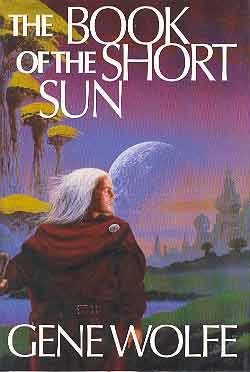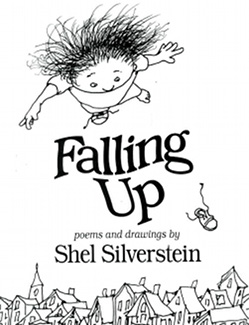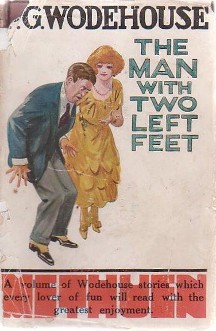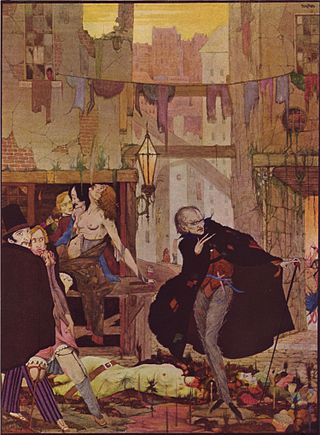
Tightrope walking, also called funambulism, is the skill of walking along a thin wire or rope. It has a long tradition in various countries and is commonly associated with the circus. Other skills similar to tightrope walking include slack rope walking and slacklining.

A pedometer, or step-counter, is a device, usually portable and electronic or electromechanical, that counts each step a person takes by detecting the motion of the person's hands or hips. Because the distance of each person's step varies, an informal calibration, performed by the user, is required if presentation of the distance covered in a unit of length is desired, though there are now pedometers that use electronics and software to determine how a person's step varies automatically. Distance traveled can be measured directly by a GPS receiver.

The Longest Journey is a bildungsroman by E. M. Forster, first published in 1907. It is the second of Forster's six published novels, following Where Angels Fear to Tread (1905) and preceding A Room with a View (1908) and Howards End (1910). It was Forster’s favourite among his own novels.

Sylvie and Bruno, first published in 1889, and its second volume, Sylvie and Bruno Concluded, published in 1893, form the last novel by Lewis Carroll published during his lifetime. Both volumes were illustrated by Harry Furniss.

The Book of the Short Sun (1999–2001) is a series of three science fantasy novels or one three-volume novel by the American author Gene Wolfe. It continues The Book of the Long Sun (1993–1996): they share a narrator and Short Sun recounts a search for Silk, the Long Sun hero. The two works are set in the same universe as The Book of the New Sun series that Wolfe inaugurated in 1980 and the Internet Speculative Fiction Database (ISFDB) catalogs all three as sub-series of the "Solar Cycle", along with some other writings.

Falling Up is a 1996 poetry collection primarily for children written and illustrated by Shel Silverstein and published by HarperCollins. It is the third poetry collection published by Silverstein, following Where the Sidewalk Ends (1974) and A Light in the Attic (1981), and the final one to be published during his lifetime, as he died just three years after its release. Falling Up was the recipient of the Booklist Editors' Award in 1996.. In 2015, a special edition of the book was published, with 12 new poems.

"White Nights" is a short story by Fyodor Dostoevsky, originally published in 1848, early in the writer's career.

The Man Upstairs is a collection of short stories by P. G. Wodehouse, first published in the United Kingdom on 23 January 1914 by Methuen & Co., London. Most of the stories had previously appeared in magazines, generally Strand Magazine in the UK and Cosmopolitan or Collier's Weekly in the United States. Although the book was not published in the US, many of the stories were eventually made available to US readers in The Uncollected Wodehouse (1976) and The Swoop! and Other Stories (1979).

The Man with Two Left Feet, and Other Stories is a collection of short stories by British author P. G. Wodehouse, first published in the UK on 8 March 1917 by Methuen & Co., London, and in the US on 1 February 1933 by A. L. Burt and Co., New York. All the stories had previously appeared in periodicals, usually The Strand Magazine in the United Kingdom and The Red Book Magazine or The Saturday Evening Post in the United States.

The Celestial Omnibus and Other Stories is the title of a collection of short stories by English writer E. M. Forster, first published in 1911. It contains stories written over the previous ten years, and together with the collection The Eternal Moment (1928) forms part of Forster's Collected Short Stories (1947).

"The Man of the Crowd" is a short story by American writer Edgar Allan Poe about a nameless narrator following a man through a crowded London. It was first published in 1840.

Betrachtung is a collection of eighteen short stories by Franz Kafka written between 1904 and 1912. It was Kafka's first published book, printed at the end of 1912 in the Rowohlt Verlag on an initiative by Kurt Wolff.

The Crater is a manga by Osamu Tezuka that began serialization in 1969.

"Kew Gardens" is a short story by the English author Virginia Woolf.

In Black and White is a collection of eight short stories by Rudyard Kipling which was first published in a booklet of 108 pages as no. 3 of A H Wheeler & Co.’s Indian Railway Library in 1888. It was subsequently published in a book along with nos 1 and 2, Soldiers Three (1888) and The Story of the Gadsbys, as Soldiers Three (1899). The characters about whom the stories are concerned are native Indians, rather than the British for writing about whom Kipling may be better known; four of the stories are narrated by the Indians, and four by an observant wise English journalist. The stories are:

Quirky Tails is the third in a series of short stories by Australian author Paul Jennings. It was first released in 1987.
The Cadfael Chronicles is a series of historical murder mysteries written by the linguist-scholar Edith Pargeter (1913–1995) under the name Ellis Peters. Set in the 12th century in England during the Anarchy, the novels focus on a Welsh Benedictine monk, Cadfael, who aids the law by investigating and solving murders.
"The Short Happy Life of the Brown Oxford" is a science fiction short story by American writer Philip K. Dick, first published in the January, 1954 edition of The Magazine of Fantasy & Science Fiction and later in Beyond Lies the Wub in 1984 and in The Short Happy Life of the Brown Oxford, a collection of Philip K. Dick short stories, in 1990.

The Walking Dead: Rise of the Governor is a post-apocalyptic horror novel written by Robert Kirkman and Jay Bonansinga and released October 11, 2011. The novel is a spin-off of The Walking Dead comic book series and explores the back-story of one of the series' most infamous characters, the Governor. Rise of the Governor is the first in a trilogy of novels. The Walking Dead's fourth season utilizes plots from the novel, the Chalmers family in particular.
L'Auberge rouge is a short story by Honoré de Balzac. It was published in 1831 and is one of the Études philosophiques of La Comédie humaine.















